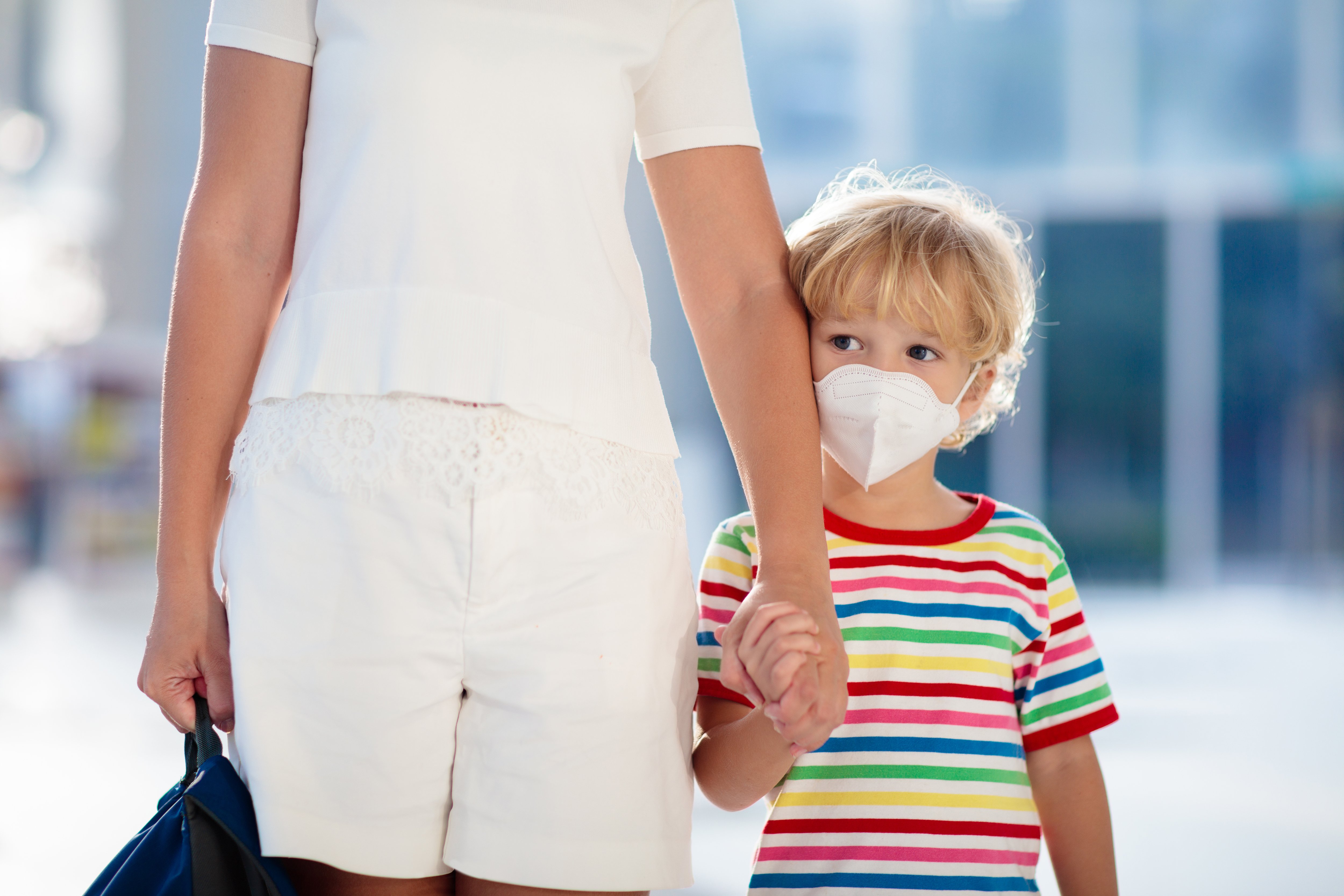The latest information, best prevention practices and resources
It’s everywhere—extensive coverage regarding the novel coronavirus (COVD19), speculation as to what will happen next and advice on what to do about it. It’s natural to feel concerned regarding new illnesses and health-related events.
It is widely believed that social distancing can help reduce the threat, and we’ve pulled together additional recommendations for healthcare facilities, worship centers, municipalities and emergency responders using top-level tips from the Department of Health(DOH) and the Centers for Disease Control (CDC). Keeping yourself aware and educated is the first, critical step to being properly prepared. Please read, peruse the below resources and links, and share with others to help us spread the word.
BEST PRACTICES FOR EVERYONE IN THE COMMUNITY:
- Practice social distancing by staying home and away from others in the community whenever possible.
- Leave the house only for essential, life-sustaining items or emergencies.
- Don’t cover sneezes and coughs with your hands—use your elbow or a tissue.
- Wash hands for at least 20 seconds (and up to 2 minutes) with warm water regularly throughout the day. Officials are recommending about 20 hand washings per day.
- If soap and water aren’t available, keep an alcohol-based hand sanitizer with you at all times.
- Clean frequently-touched surfaces daily with disinfectant spray or wipes, paying special attention to items like phones, remotes, doorknobs, cookware, toothbrush and fridge handles, light switches, tables, countertops, railings and more.
- Avoid touching your eyes, nose and mouth.
- Stand at least 6 feet away from others when having to be in public.
- If you do not feel well, have developed a cough or have difficulty breathing, seek medical care as early as possible.
BEST PRACTICES FOR HEALTHCARE WORKERS:
- Follow state-specific, currently-implemented patient care protocol.
- Consider removal of rings, bracelet, and artificial nails, which can trap and spread germs.
- Advise patients and other providers to wear face masks when in the same room.
- Practice proper hand hygiene with an alcohol-based sanitizer before and after interacting with patients, and in between hand washings.
- Clean high-traffic, high-touch surfaces daily.
- Dispose of all contaminated materials, such as face masks and disposable gloves in a sealed, lined container.
- Ask staff to routinely self-monitor and to avoid reporting to work if they are experiencing symptoms.
Resources for Healthcare facilities:
- Recommendations for healthcare professionals from the Centers for Disease Control and Prevention
- Advice on caring for patients from the Centers for Disease Control and Prevention
BEST PRACTICES FOR RELIGIOUS ORGANIZATIONS:
- Host remote or virtual services and cancel in-person gatherings.
- Offer virtual means for members to participate in activities and help the community through online donations instead of in-person volunteering.
- Find more information on these suggestions and other resources at: https://www.cdc.gov/coronavirus/2019-ncov/index.html
BEST PRACTICES FOR EMERGENCY SERVICES ORGANIZATIONS:
- When preparing to respond to a confirmed or possible case of COVID-19, there should be close coordination between the 911 call center, EMS agency, healthcare facility and public health system.
- Appoint an EMS medical director to provide appropriate medical oversight to clinicians including wearing PPE, minimizing contact during response and transportation, providing patients with facemasks, cleaning vehicles and gear, documenting patient care and reporting measures.
- 911 center personnel should be trained to answer callers’ questions about COVID-19 including signs, symptoms and risk factors, and be able to give pre-arrival instructions to callers and responders.
Find more information on these suggestions and other resources at: https://www.cdc.gov/coronavirus/2019-ncov/hcp/guidance-for-ems.html
BEST PRACTICES FOR MUNICIPALITIES
- Designate and train a crisis management team to handle communicating important advisories and updates to the public/local community.
- Review and update your Business Continuity Plan and/or Continuity of Operation Plan as necessary, including the sourcing of critical materials and operating on a reduced workforce.
- Encourage the public to practice social distancing, proper hand washing hygiene and to stay home whenever feeling sick.
- Provide educational resources on signs, symptoms and risk factors of COVID-19 to the community.
- Follow, and coordinate if possible, with state and federal guidelines.
- The U.S. Department of Labor shared these best practices for workers and employers from the Occupational Safety and Health Administration.
We are still studying and learning about the transmissibility and severity of COVID-19 (the novel coronavirus). At this time, we know that it can be spread through respiratory secretions like coughing and sneezing. Because spread is most likely when you are within 6 feet of a person, it is a good idea to keep a distance from others when in public.
Signs and symptoms for the coronavirus include fever, cough and shortness of breath. Some people who contact it experience only minor symptoms, but others suffer from much more severe reactions. Those who are elderly or who have chronic illnesses may be more susceptible. If you are feeling ill, it is incredibly important to seek medical help as quickly as possible. It is currently believed that you can contract COVID-19 in as few as 2 days after exposure and up to 14 days after. Authorities believe that person-to-person spreading and/or community spread is likely to continue. For as long as this is the case, we can work together to decrease our risk by participating in the best practices outlined above, being mindful of where we travel and helping to educate others on how they can do the same.
For additional resources designed to provide general information, suggestions for healthcare workers and employers, laboratory workers and employers and airline workers and employers, please see this extensive list of official resources from OSHA.gov.
This blog may contain the content of third parties and links to third party websites. Third party content and websites are owned and operated by an independent party over which Glatfelter has no control. Glatfelter makes no representation, warranty, or guarantee as to the accuracy, completeness, timeliness or reliability of any third party content. References to third party services, processes, products, or other information does not constitute or imply any endorsement, sponsorship or recommendation by Glatfelter, unless expressly stated otherwise.
DISCLAIMER
The information contained in this blog post is intended for educational purposes only and is not intended to replace expert advice in connection with the topics presented. Glatfelter specifically disclaims any liability for any act or omission by any person or entity in connection with the preparation, use or implementation of plans, principles, concepts or information contained in this publication.
Glatfelter does not make any representation or warranty, expressed or implied, with respect to the results obtained by the use, adherence or implementation of the material contained in this publication. The implementation of the plans, principles, concepts or materials contained in this publication is not a guarantee that you will achieve a certain desired result. It is strongly recommended that you consult with a professional advisor, architect or other expert prior to the implementation of plans, principles, concepts or materials contained in this publication.
This blog post may contain the content of third parties and links to third party websites. Third party content and websites are owned and operated by an independent party over which Glatfelter has no control. Glatfelter makes no representation, warranty, or guarantee as to the accuracy, completeness, timeliness or reliability of any third party content. References to third party services, processes, products, or other information does not constitute or imply any endorsement, sponsorship or recommendation by Glatfelter, unless expressly stated otherwise.
Related posts
The challenges that caregivers face are not easy. We compiled some quick tips for managing family interactions in hospice and palliative care settings.
In summer 2024, weather will be unpredictable, but these are the weather events you can expect, depending on location.
There's so much to learn about nursing, but here's 10 fascinating facts as we celebrate National Nurses week.




.png?height=300&name=Glatfelter%20Team%20-%20Blog%20-%20Author%20(1).png)




Submit a Comment